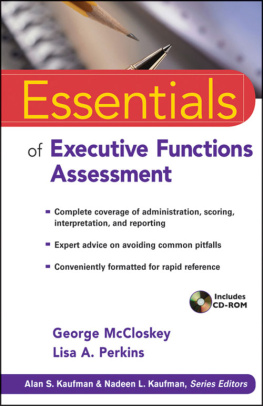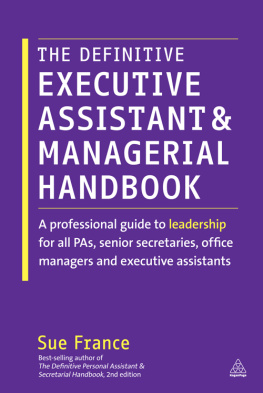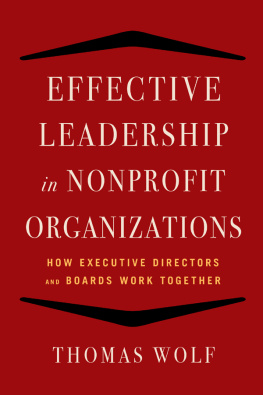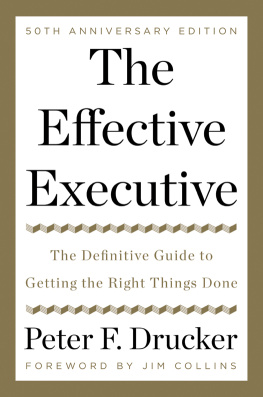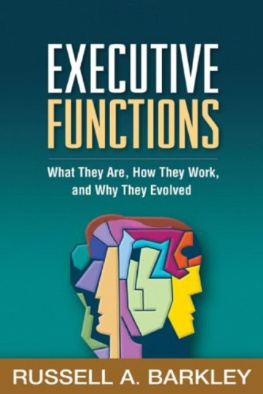THE FUTURE OF EXECUTIVE DEVELOPMENT
Mihnea C. Moldoveanu and Das Narayandas
STANFORD BUSINESS BOOKS
STANFORD UNIVERSITY PRESS
STANFORD, CALIFORNIA
Stanford University Press
Stanford, California
2022 by Mihnea C. Moldoveanu and Das Narayandas. All rights reserved.
No part of this book may be reproduced or transmitted in any form or by any means, electronic or mechanical, including photocopying and recording, or in any information storage or retrieval system without the prior written permission of Stanford University Press.
Special discounts for bulk quantities of Stanford Business Books are available to corporations, professional associations, and other organizations. For details and discount information, contact the special sales department of Stanford University Press. Tel: (650) 7250820, Fax: (650) 7253457
Printed in the United States of America on acid-free, archival-quality paper
Library of Congress Cataloging-in-Publication Data
Names: Moldoveanu, Mihnea C., author. | Narayandas, Das, author.
Title: The future of executive development / Mihnea C. Moldoveanu and Das Narayandas.
Description: Stanford, California : Stanford Business Books, an imprint of Stanford University Press, 2022. | Includes bibliographical references and index.
Identifiers: LCCN 2021013029 (print) | LCCN 2021013030 (ebook) | ISBN 9781503628724 (cloth) | ISBN 9781503629813 (ebook)
Subjects: LCSH: ExecutivesTraining of. | ManagementStudy and teaching.
Classification: LCC HD30.4 .M65 2022 (print) | LCC HD30.4 (ebook) | DDC 658.4/07124dc23
LC record available at https://lccn.loc.gov/2021013029
LC ebook record available at https://lccn.loc.gov/2021013030
Cover design: Andrew Brozyna
I dedicate this book to Calin Moldoveanu, from whom I learned to watch, sense, and take note of what my mind is doing when it is learning.
Mihnea Moldoveanu
Thank you Sunitha, my soulmate and partner, for your unstinting love, encouragement, and support.
Das Narayandas
CONTENTS
PREFACE
You are about to read a study of the field of executive development written by two people who have both led executive development organizations and studied the industry in detail, using broad empirical evidence drawn from interviews with clients and their organizations CLOs and CEOs. The study is both descriptive and prescriptive in nature: it aims to give guidance on what organizations employing executives and managers should seek and do, and what executive development providers should heed and think of doing.
Prediction is hardespecially about the future, as Yogi Berra quipped. But no study of The Future of X can escape making predictions about Xand that is no less true of the executive development field than it is of any other X. Accordingly, we do make predictionseven in a year that has seen most industriesincluding this onedisrupted by governments responses to a global pandemic that have rendered most of the models of interaction between suppliers and providers disrupted and restructured, with consequences that seem hard to predict. This study is based on a five-year-long research project in which both of us have observed, measured, integrated, thought, and done many things in the space of this industry. We have surveyed executives coming to executive development programs, interviewed them, spoken to the CEOs and CLOs of the organizations for which they work, spoken to the key decision makers in suppliers and aggregators of executive development programs and experiences, restructured and redesigned our own executive development programs to heed the insights we gleaned, observed and measured the outcomes of our interventions, and mapped out the skill base of executives at various organizational levels, the skill development vehicles most suppliers offer, and the outcomes of these programs for the organizations we interacted with. Most of the trends we speak about have been borne out and even amplified by the global COVID-19 episode. The future is coming more quickly than we anticipated when we started our journey. But it is not a different future from the one we contemplated when we set off on our journey five years ago.
We are writing as both observers and researchers of the fieldand actors and decision makers within the field. That isunfortunatelyrare in the realm of monographs and scholarly works, which deploy research to give answers to questions asked from an observers perspective alone. But the first-person perspective contributes an in-the-moment feel of reality, and an understanding of the predicament of the decision maker who must act now, with limited information that is critical to making the prescriptions, predictions, and suggestions imminently useful and valuable to other doers and executives. Each one of us was the Senior Dean in charge of executive education at our respective schools (the Rotman School of Management at the University of Toronto and the Harvard Business School at Harvard University) during the time this book was written. Our positions enabled us to both observe the phenomenon up close and tailor our understanding and our research to the first-person vantage point: knowledge is for action, understanding is for intervening, and prediction is for planning moves and responses. We have accordingly written a book that aims to speak directly to academics and students of executive development as a field on one hand and, on the other, to executives (CEOs and CLOs) of organizations that are clients of executive development suppliers, decision makers in business schools, consultancies, and coaching and other executive development organizations that want to understand for the purpose of doingand not just for that of writing, publishing, contemplating, or talking about doing.
Our approach rests on a few foundational assumptionsroughly, the kinds of beliefs that people working in this field need to believe to be true in order to get up in the morning and look in the mirror without experiencing a personal crisis:
First, that executive development matters to organizations: that it is a useful way for organizations to acquire new capabilities that enable them to do better at what they seek to do. That is by no means obvious. CEOs and their top management teams have at least two levers for changing their organizations: selection and development. They can simply fire and rehire, hire into brand new organizational structures, or simply acquire organizations that have always had the capabilities they seekinstead of investing in the development of their executives. Restructuration is not costless, but given the increasing precision with which the market for talent is working and the increasing granularity with which it is allowing talent managers to hire for bundles of skillsverified by LinkedIn or other platformsthe cost-benefit picture of this option has been improving and will continue to improve steadily. The development option is facing a steadily rising bar of efficacy and quality for its success. This is the assumption that motivates many of our suggestions and exhortations for immediate change in the industry.
Second, that executive development is causally efficacious in helping executives acquire skills which they then successfully apply in their organizations in ways that allow the latter to build capabilities that are valuable and distinctive. This is also by no means an obviously valid assumption. In fact, as we will show, there are scenarios in which the industry can runand perhaps has been runningon vapor ware: on executives pretending to learn, taught by providers who pretend to teach, paid for by organizations that pretend to care and to benefit, even though each party derives personal benefits that have little to do with skill acquisition and transfer and capability development. But this would not beand is nota survivable or robust equilibrium: the gig would have been upor will be uppretty quickly if the interactive beliefs of organizational leaders, executive learners, and executive program providers do not cohere. This is the assumption that underlies our focus on skill acquisition, skill application, and the conversion of skill into capability as the core source of value of executive development activity sets.


